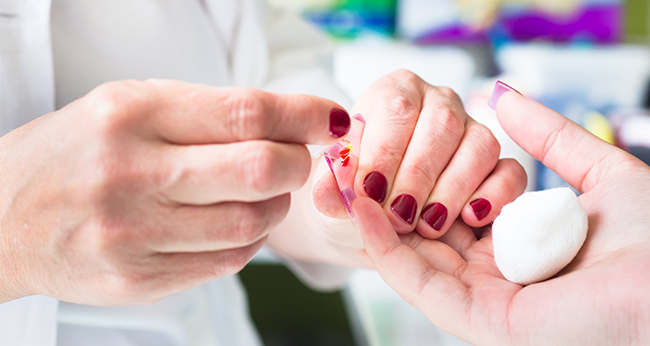Cholesterol is a waxy, fat-like substance that plays a vital role in our bodies. It helps build the outer coating of cells; it makes up the bile acids that work to digest food in the intestine; and it is needed to make vitamin D and some hormones, like oestrogen in women and testosterone in men. However, as we all know, too much cholesterol can significantly increase the risk of circulatory problems and coronary heart disease.
Our livers produce all the cholesterol our bodies need, but we take in more from certain foods, especially those from animal sources. Excess cholesterol can build up as plaque in the walls of arteries, eventually hardening in a process called atherosclerosis which narrows the arteries and makes it more difficult for blood to reach the heart. If an artery becomes totally blocked, it causes a heart attack.
Generally, there are no warning symptoms of high cholesterol and a routine blood test is the best way of finding out in good time whether you need to make any changes. So what should you look out for?
The test gives a reading of the total cholesterol in your blood, and also measures three specific kinds of fat. LDL – low-density lipoprotein – is “bad” cholesterol, the main cause of plaque build-up, and on the whole, the lower your LDL reading, the better. HDL, high-density lipoprotein, is the protective “good” cholesterol that transports bad cholesterol from the blood to the liver so it can be excreted by the body. In general, a high HDL number is good news. The cholesterol test also measures triglycerides (TG), which are the fats carried in your blood from the food you eat. The triglyceride reading indicates the efficiency with which fats are cleared from the blood after a meal.
For most people a healthy total cholesterol level is below 5 mmol/L (millimoles per litre of blood), but it’s the HDL and LDL levels which are the primary indicators of potential heart disease. Unless you’re otherwise considered to be at particular risk, LDL cholesterol should be 3 mmol/L or lower, and HDL should be above 1mmol/L. A triglyceride level below 1.7 mmol/L is good.
Apart from age (meaning if you’re over 40), other factors that put you in a higher risk category include being overweight or obese, having high blood pressure or diabetes, or having a family history of heart or cardiovascular problems, particularly a first-degree relative. Other pre-existing medical conditions can also make a difference. If you fall into the higher-risk category, your total cholesterol should be 4 mmol/L or lower, and your LDL should be 2 mmol/L or lower.
You should have your cholesterol tested every five years, unless you’re at particular risk in which case you will probably need to be checked more often. It’s advisable to have the simple blood test done by a trained professional rather than using a home-testing kit, as it requires some specific skills and the results can be affected by the way you perform the test. High cholesterol generally responds very well to lifestyle changes such as cutting down on fat in the diet and taking more exercise, or your doctor may prescribe cholesterol-lowering medication like statins.
On the whole, cholesterol is easily managed and can make a huge difference to your health and quality of life – and it starts with knowing your numbers.
Other articles you may be interested in:
Regular health check ups you’ve got to have
The beer boep: What’s the story?
Good fats, bad fats
The truth about health rules
The facts about fat






3 Responses
It is important to understand the difference between good and bad cholesterol. I think people feed into the notion that cholesterol is automatically bad and will cause a heart attack. Thank you for taking a step to educate us.
Good article, makes you think about whether you are in fact as healthy as you think.
Such a great article!